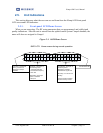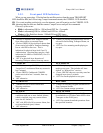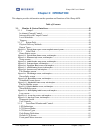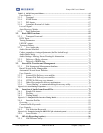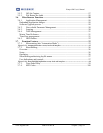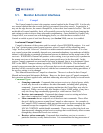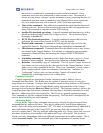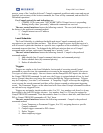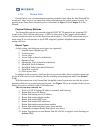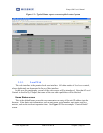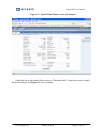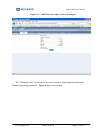
iPump 6420 User’s Manual
www.wegener.com 800070-01 Rev B Chapter 3, Page 42
capabilities, allows a receiver to be addressed as a logical AND of a basic address (all, group, or
SN) and the unit “state”. In the case of iPump6420, this “state” is the assignment of specific
audio streams, by Language Descriptor (LD), to one or more of its constituent Audio Ports. If
the base address matches, and the audio stream is assigned to any of the Audio Ports, then that
command is executed, and, moreover, directed specifically to that Port. A prime example is a
command to pulse a relay. If associated with an audio stream STR, and if STR is only assigned
to Port #2, then a relay associated with Port #2 is pulsed.
Note that the basic Compel address field may actually be a Boolean expression, combining
groups and AND and OR operators, to create more complex addresses.
Timing
Because Compel commands frequently must be aligned, or synchronized, to events
occurring in the live audio streams, Compel provides some methods to assist. For example, the
audio track and a closure may originate from a customer automation system “in sync”, where the
closure occurs at the moment a local spot is to be inserted. Because the audio track will be
delayed in the MPEG compression system, the Compel command created by the Compel Event
handler will also need to be delayed. This may be done with the legacy Compel NETCON
DELAY command (see Compel Manual). But this affects all commands coming from Compel
during the delay period. A superior tool is another capability found in the Compel Extended
Syntax: Command Delay. With this, only that one Compel command will see its execution
delayed after receipt. The delay can then be fine-tuned to tightly align the overlay of the local
spot with the network “avail” (default network spot).
When fine-tuning the alignment of switches, inserts, or relay closures, at i6420 outputs, to
the live audio track, the system implementer should also be aware that the i6420 will implement
an automatic delay in all Compel commands that are timing critical, relative to the audio track.
This is called Compel Command Delay. For more details on the i6420 timing model, see section
3.4.3.
For Compel control, the unit indications are:
1. COMPEL LED (some units “NETWORK”) ON if Compel command stream is being
received, flashing briefly when “personally” addressed commands are received
For Compel, the following unit controls are applicable. For most, the user (with debug
access) or the factory is the preferred command method:
1. Compel PID (Transport packet ID conveying Compel messages)
2. Compel Header (must match between Compel and receiving i6420s)
3. Local Control Enable (generally set by Compel)
4. Compel sharing flag (if set to “Share” and Compel is a shared Compel, then the unit
is allowed to accept the command stream, regardless of conflicting Headers)
5. Compel Command Delay (factory set, defaults to 500 mS)
6. Compel-required factory setting
Internet-delivered Compel Control
The iPump6420 may be set to receive its Compel commands, not through a satellite channel,
but over the internet. In this method, the i6420 will do scheduled HTTP polling of the Compel
server (which must, in turn, be set to support this method). At each poll, the set of pending
commands that would be addressed to the i6420 are downloaded from Compel. (This is a
complex operation in Compel to decode all the Group addresses back to direct by-serial-number
addresses.) The commands are then processed in order. Because of the expected latency in this




